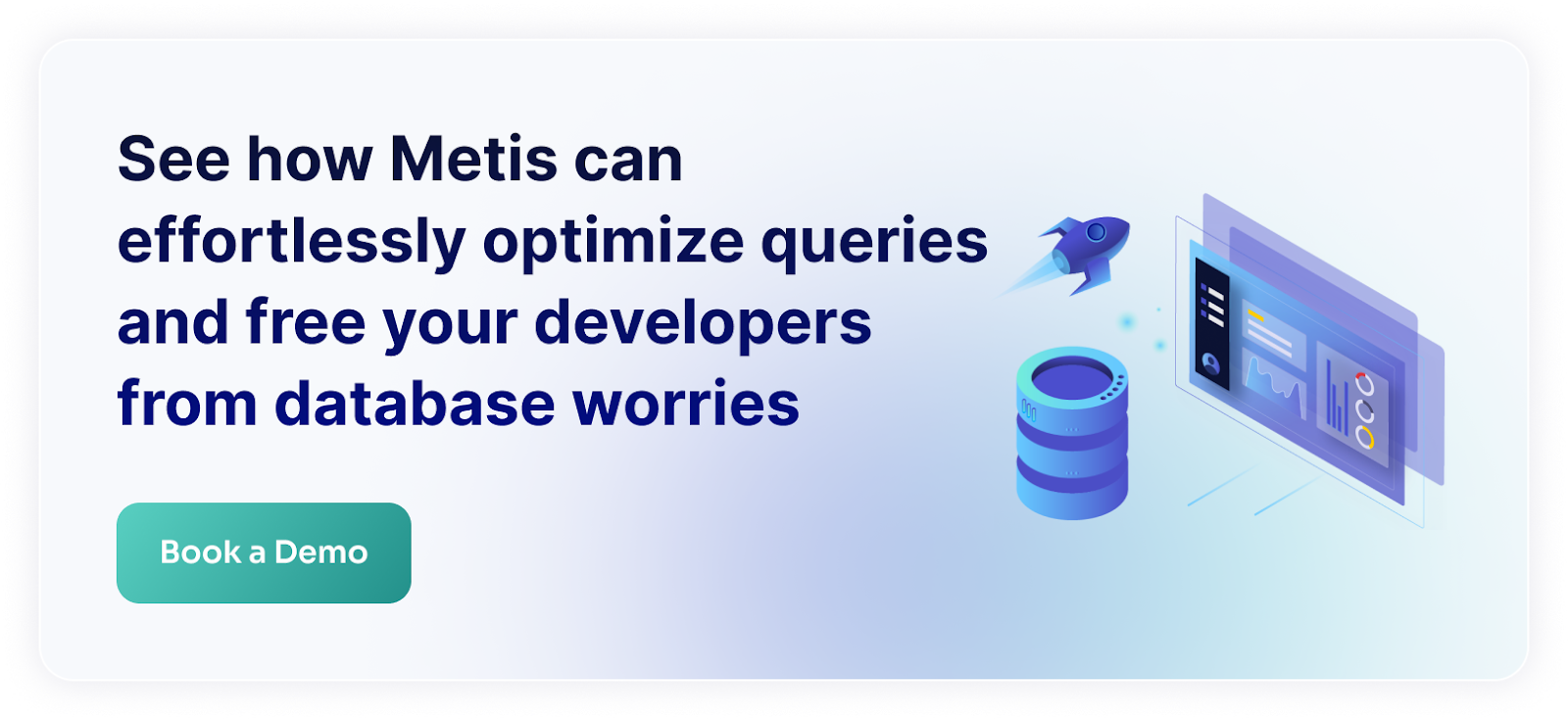There are two important tasks that each developer faces when using databases - how to make queries faster and how to improve the schemas. There are many ways to tackle these problems and we need to find the balance between how much time we spend and how much we improve the performance. Let’s see what we need and how Metis helps us achieve these improvements.
Theory Behind the Performance
Many things affect the performance of the database. First and foremost is what techniques we use to query the data. We can use CTEs that may be slower than the less readable code with duplications. We may go with many joins that can exponentially increase the number of rows we extract from the database. We may use cursors that let us achieve nearly anything but are terrible for the performance.
The next thing is what indexes we have in our database. We may go with popular B-tree-based indexes, but we may also have text-oriented indexes with trigrams or things supporting ML and vector databases.
Then come all the things that make the optimization engine produce faster plans. We may reorder our filters, change the way we use user-defined functions, or split one query into many and then union their results.

For schemas, there are many ways to normalize or denormalize the data. We can use 3NF or snowflake schema, just to begin with. Depending on our use case, we may split tables into many or join them together and store them as JSON blobs. All these techniques depend greatly on our domain and application.
No matter what we choose to do, we need to have tools that can help us along the way. Just like we have compilers and static code analysis protecting us from silly mistakes, we need to have tools that can analyze our queries, schemas, and configurations, and provide automated insights. There is just one tool out there that does all of that - Metis. Let’s see what we get and how it helps developers to make queries faster and schemas better.
Use Metis to Improve Your Queries and Schemas
Metis provides actionable code improvements for all your queries. It can neatly summarize what happens and show you immediately how to fix the issues:

Metis provides actionable insights with explanations:

Metis can also visualize the queries for you:

Metis uses an AI engine to rewrite your queries and verify if they are going to work faster in the production database:

Metis does all of that in your developer environment, so you don’t even need to commit the code to immediately know if your queries are going to work well in your production database.
Metis analyzes other things as well. It checks your tables:

Metis also verifies that your indexes are used efficiently:

Metis covers your configurations:

Last but not least, Metis gives you insights into how your database performs:

You can keep track of everything that happens in your database with live queries:

Metis gives you everything you need to tune your queries and make your schemas better.
Improve Your Database With Metis
Metis covers all you need to make your queries faster and schemas better. You get actionable code improvements, schema analysis, index coverage, and AI-based suggestions on how to optimize your queries. Metis is the only tool that walks you through the optimization process and leads you along the way. Use it today and make your databases faster.







